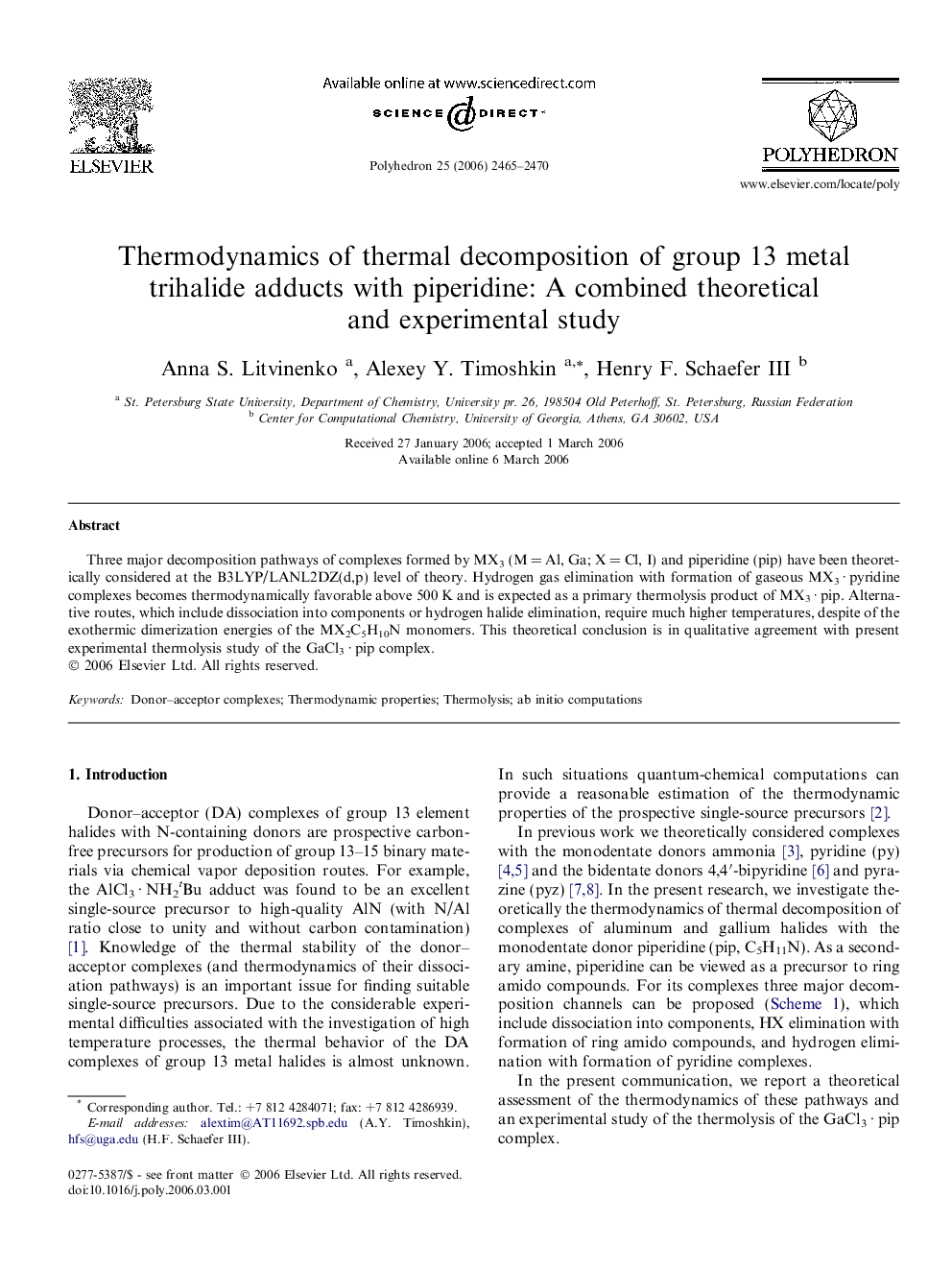| Article ID | Journal | Published Year | Pages | File Type |
|---|---|---|---|---|
| 1340556 | Polyhedron | 2006 | 6 Pages |
Three major decomposition pathways of complexes formed by MX3 (M = Al, Ga; X = Cl, I) and piperidine (pip) have been theoretically considered at the B3LYP/LANL2DZ(d,p) level of theory. Hydrogen gas elimination with formation of gaseous MX3 · pyridine complexes becomes thermodynamically favorable above 500 K and is expected as a primary thermolysis product of MX3 · pip. Alternative routes, which include dissociation into components or hydrogen halide elimination, require much higher temperatures, despite of the exothermic dimerization energies of the MX2C5H10N monomers. This theoretical conclusion is in qualitative agreement with present experimental thermolysis study of the GaCl3 · pip complex.
Graphical abstractThree major decomposition pathways of complexes formed by MX3 (M = Al, Ga; X = Cl, I) and piperidine (pip) have been theoretically considered at the B3LYP/LANL2DZ(d,p) level of theory. Hydrogen gas elimination with formation of gaseous MX3 · pyridine complexes becomes thermodynamically favorable above 500 K and is expected as a primary thermolysis product of MX3 · pip. Alternative routes, which include dissociation into components or hydrogen halide elimination, require much higher temperatures. This theoretical conclusion is in qualitative agreement with present experimental thermolysis study of the GaCl3 · pip complex.Figure optionsDownload full-size imageDownload as PowerPoint slide
